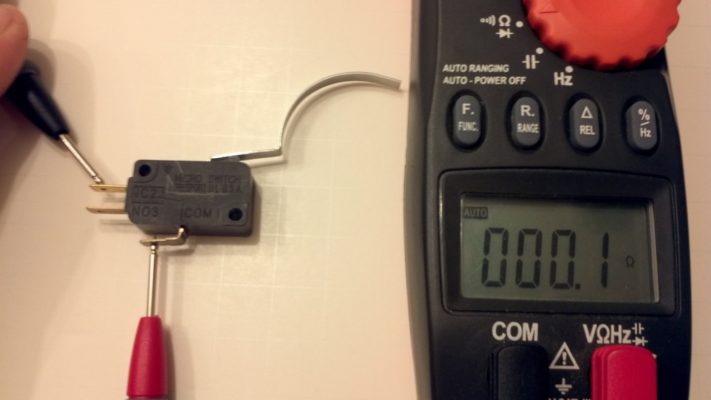Micro switches are very common in vending machines. They are in soda vending machines and snack vending machines. When a vending motor does not respond anymore, the micro switch could be bad/faulty. Let's learn how to test vending micro switches to see if they need to be replaced.
Tools Needed to Test Micro Switches

The only tools required in order to test your vending micro switch is a digital or analog OHM meter, and basic miscellaneous tools to remove the micro switch. A basic multimeter should be able to test for resistance.
Listed below is a few good multimeters with links to Amazon.
Removing the Micro Switch
The first thing that needs to be done is to turn the power off of the vending machine. Once you have done that it's time to remove the micro switch. Make note of what wire went where when removing the micro switch. Just about every different type of vending machine has a different location for the micro switch(es). Gaining access to the micro switch might seem to be a bit challenging some times. Once you have found the desired micro switch to be removed, a set of basic tools should be good enough to do the job.
Examining the Micro Switch

Now that you have the micro switch removed, examine it for any signs of abnormality. Is is sticky? Is it burned/charred? Does it smell? Is the body cracked or damaged? Does the lever stick when pressed? If you notice any of these signs, replace the micro switch regardless of its function.
A sticky micro switch is mostly found in soda and coffee vending machines. This happens when the micro switches are inadvertently exposed to product(s) from the machines (i.e. - creamer and sugar from coffee machines, sugary drinks from soda cans and bottles jamming/breaking). It's always a good idea to have extra micro switches on hand because machines fail (that's why you are here!).
Burned, or charred micro switches tend to mostly be in older machines.
About the Micro Switch
The basic micro switch has two different positions. One position is "NO", or "Normally Open", the other position is "NC", or "Normally Closed". "NO" means that there is an open connection, or no connection, in the micro switch. As you may have guessed, "NC" means that there is a connection being made inside the micro switch.
When the button/lever on the micro switch is activated or pressed, the connection(s) inside the micro switch reverse. That means a switch that is "NO" will have a connection when pressed, and the "NC" connection will now be open.
Testing the Micro Switch

Now that you understand how a micro switch works, let's see if yours is functional. The first thing you need to do is set your meter to check for resistance. Always test your meter by making contact between the positive and negative probes. The result should show little to no resistance.

Place one of the probes on the contact labeled "COM" (Common). Place the other probe on the contact labeled "NC". Check your meter for resistance. Once again there should be little, or no resistance. If the meter does nothing, replace the micro switch. Press the button/lever on the micro switch. The meter should now show the opposite of the "NC" reading. If the meter does nothing, replace the micro switch.

Testing the "NO" side of the micro switch is just as easy. Place one probe on the contact labeled "COM". Place the other probe on the contact labeled "NO". Nothing should happen on your meter. Now press the button/lever and your meter should show little, or no resistance. If the meter does nothing, replace the micro switch.













